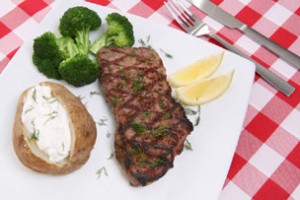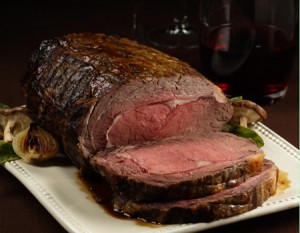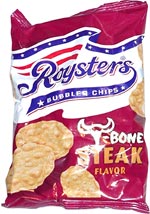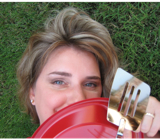
It’s always fun to see other people’s ideas of what makes a great steak. There are so many possibilities and there really are no WRONG answers.
I wish school had been that easy.
So here are some thoughts from Kathy Maister’s StartCooking.com.
3 Ways to Cook a Great Steak
Dry. Raw. Charred. Chewy. Why does cooking a decent steak give us the willies? For one, there are a number of different ways to cook steak. You can grill, broil or fry it, depending on your preference.
Kick things off with a steak that is at least 1-inch thick (strip steak, t-bone, porterhouse, etc.) — anything thinner will likely dry out, and anything thicker makes it difficult to gauge doneness. No matter which cooking style you choose, start by sprinkling the meat with a good dose of salt and pepper. I also like to take a crushed garlic clove and rub it all over the beef. If you’d like, try marinating the steak, but this isn’t necessary for any of the techniques below.
Now, let’s review our cooking options:
1. Fry: Simply put, you’re tossing a hunk of beef into a frying pan. Fire up a pan on medium heat, and warm up a teaspoon of oil for a minute, and then lay your steak in the pan. (Make sure you turn on your stovetop fan and keep your pan covered because this tends to be a smoky job.) A 1-inch thick steak should cook for about 4 minutes on each side, depending on how you like it cooked.
2. Oven Roasting: Restaurants often use this method of cooking steak, but it requires two steps:
Pre-heat the oven to 450 degrees F and grab a heavy frying pan that’s oven-safe (like one of those black cast iron skillets your mom used to use).
Turn the burner or element on high heat, and warm up that skillet until it’s piping hot.
Drop a teaspoon of oil in the pan and let it heat up
Using tongs, gently put the steak in the pan and sear it for about 90 seconds on each side. This locks in the juices.
Now, place the pan in the oven to finish cooking. Roast the meat for 6-9 minutes, depending on how you like it cooked.
If you don’t have an iron skillet, all hope is not lost. Use a regular frying pan to sear the steak, and then transfer it and all the juices to an oven-safe pan to finish the roasting process.
3. Grill: This tends to be the method of choice for meat-lovers. Make sure your barbecue is piping hot (at least 450 degrees F). Pour a little olive oil on a paper towel or a small brush and rub the grill slats before you lay the steak down. Once it’s on the grill, reduce the heat to medium and keep the lid down (and quit peeking!) After 4-5 minutes, it’s time to turn the steak over and let it go another 4-5 minutes on the other side.
5 Tips for Cooking a Great Steak:
Decide before you start cooking on how you want the steak done. A few people like “blue” (near raw!) but most tend to prefer their steaks from medium rare to well-done. If you decide in advance, you’re more likely to pay attention to it and remove the meat in time.
Try to avoid turning the meat too many times. Ideally, you should have one flip — two at most. Resist the temptation to touch the meat too much.
Use a set of tongs to turn the steak. Poking it with a fork puts holes in it and allows the juice to seep out — and then you’re just asking for dry beef.
Don’t mash on the steak with your tongs. That’s just as bad as poking it with a fork, and presses out all the juices. If you’re testing for doneness, just gently press with the flat part of your tongs. The harder the meat is, the drier it will be.
Don’t just gobble up the steak the moment you stop cooking it. Put it on a plate and let it rest for a few minutes. You’ll notice that a lovely juice oozes out as it settles.
Quote and photo courtesy of StartCooking.com.



